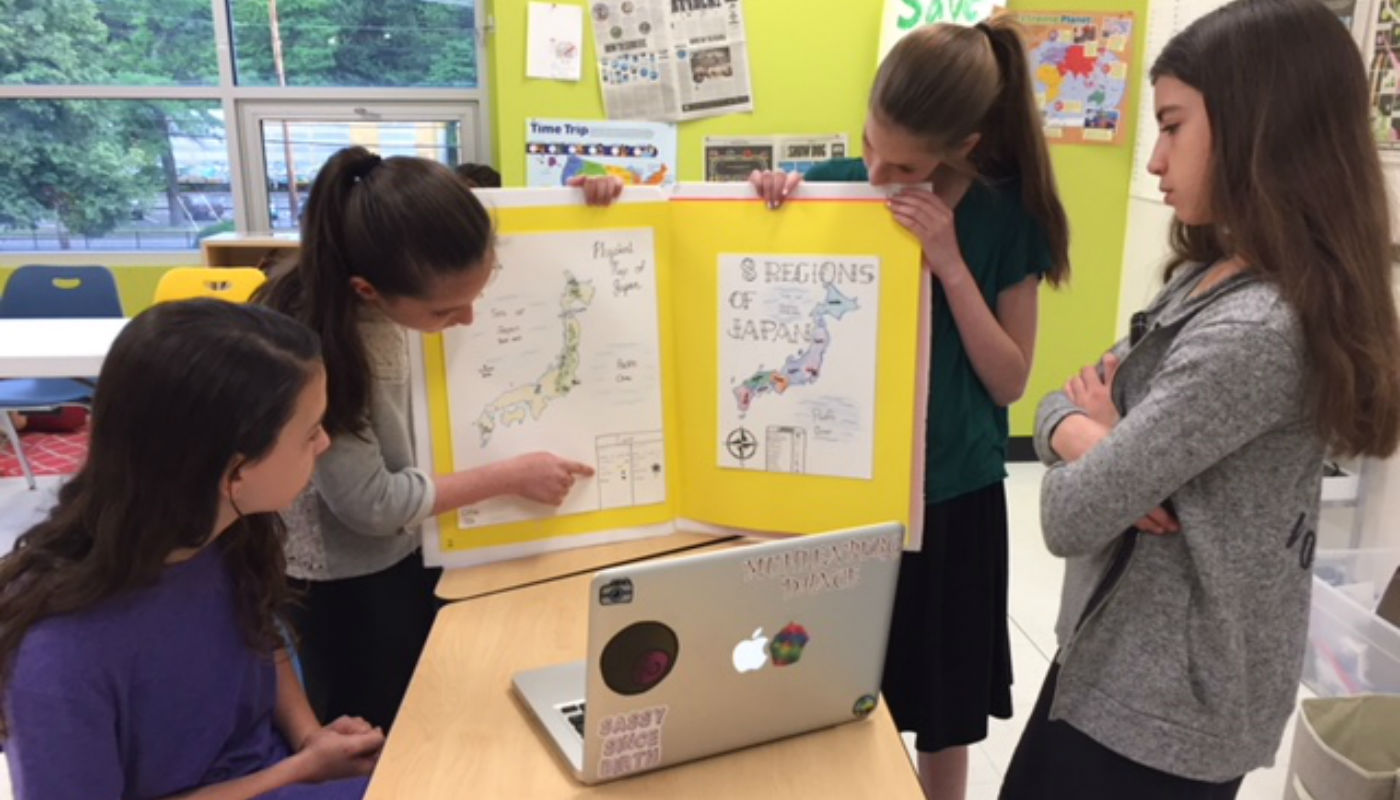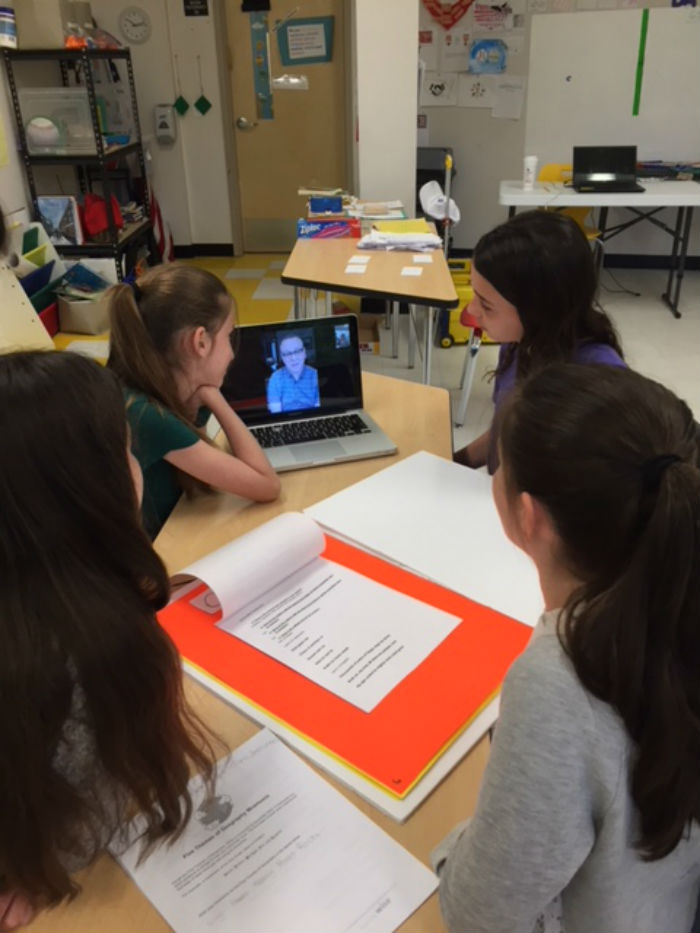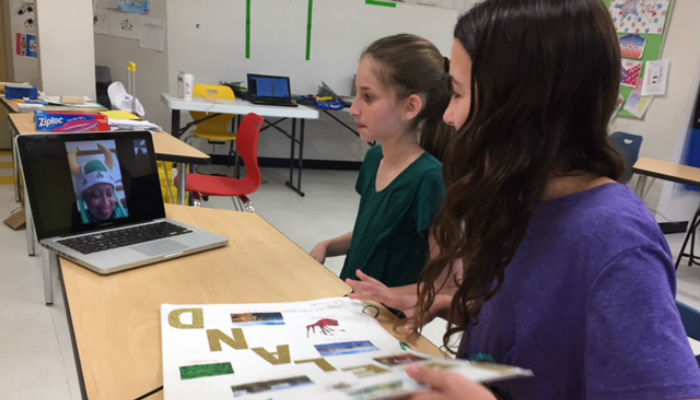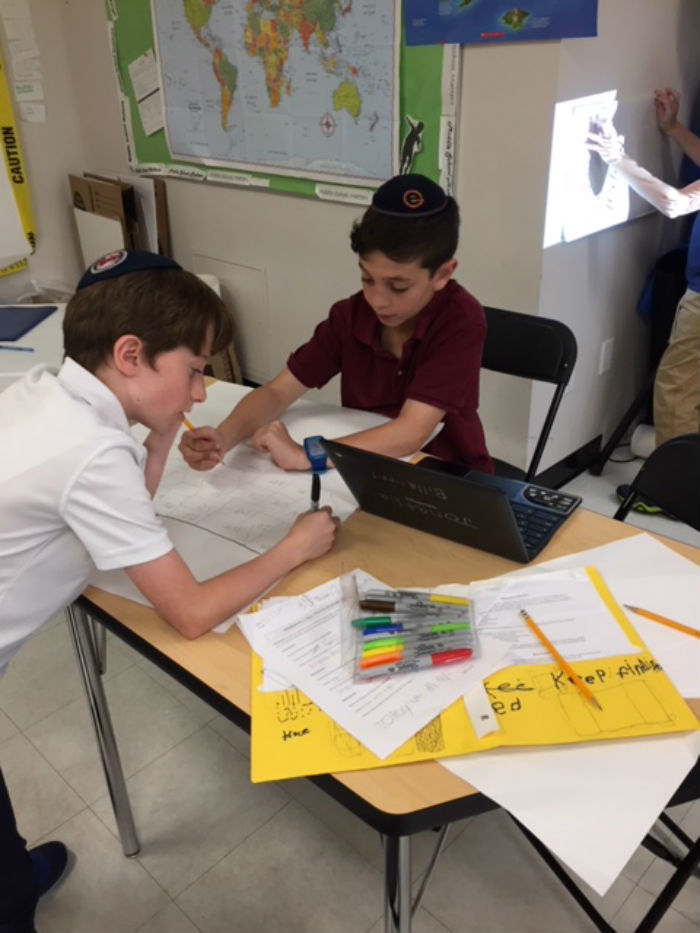
As a 5th and 6th grade teacher and project facilitator at Yeshivat He’Atid, in Teaneck, New Jersey, nothing opened my world and that of my students last year more than the My Atlas Project.
Throughout the nine weeks spent on this unit, between mid-April and June, the teachers and students, along with their parents behind the scenes, made choices, went through Plan A, B and sometimes C, made mistakes and learned from them, and finally held presented authentic atlases for a real audience.
I made some choices before assigning the My Atlas Project. What evolved was a pleasant surprise, one I relished after more than three decades as an educator.
Based on this experience during my first year using Summit, I encourage educators to edit and brand the units for their students. When I saw their final products, I was glad I did.
I would like to share what I learned in the process so that other educators can have more ease in customizing curriculum for their students.
How I Customized a Project for My Specific School Community
The project I started with can be found in the Summit Learning Base Curriculum for Grade 5. It’s a history Project, called “My Atlas of the United States.” As a curriculum editor, I renamed it “My Atlas.”
-
I Decided on the Curriculum Customizations I Wanted to Make
First, I read through the whole unit. The Teacher’s Guide was very useful. I knew I needed to adjust the scope of student choice for the country of the atlas and edit the checkpoints to include content from earlier in the school year.
After thinking about the the final product and the number of students I had, I knew that I did not want to read 55 versions of an atlas of the USA. Realizing how easy it was to revise the Google docs in the Summit Learning Platform, and with the support of Mary Kircher, my Summit Learning mentor, I revised the language for the project.
Also, because we had previously completed the Poetry Unit, I integrated experience from that unit into the Atlas Project. I used guiding questions to challenge the students to define the term Poet Laureate, to find the Poet Laureate of their country, find the national song and then write a poem or song in honor of their own hometown or state. From the beginning, students were asking to perform for their classmates.
-
I Customized the Project Even Further to Be Relevant to My School Community
Being in a Yeshiva, a Jewish day school, my first impression was that I wanted to integrate Judaism into the material. I asked students to find the population of Jewish people in a country they selected and to identify where most of those people resided. I also asked them to locate Jewish places of worship or landmarks in their area. Then, because their atlases included political maps, geographical feature maps, and special topic maps, I asked students to infer why the population was in that specific locale.
-
I Recognized and Supported Student Motivation and Habits of Success
Two weeks before the due date of the project, diligent pupils asked me to let them work in class during recess. They began to bring their lunches to the classroom and to contact their parents for more poster boards and supplies.
These middle schoolers were realizing the Habits of Success they needed to call upon in order to complete the project. These social and emotional skills that enable students to be successful at both academic and non-academic pursuits and include the skills that help them become self-directed learners.
-
I Used Social Media to Create a More Authentic Audience
While listening to their chatter, I had an a-ha moment. I would use social media to open the door to the real world a bit more for these students.
I posted a request onto social media, I called relatives, and sent a few emails. I was now determined to find people from some of the countries the students had selected, who would speak with the student authors.
I left it open to Skype, FaceTime, and WhatsApp. At first, I did not tell the students, in case I couldn’t make it happen; however, as the responses started coming in, I made a chart for them to see possible interviewees from around the world:
- An au pair from Mexico
- A travel agent from Japan
- People who travelled to Hungary, Ireland, and Iceland
- A mom of one of the students who lived in Belgium, France, and Israel
- On the last day of school, a WhatsApp with an acquaintance’s son living in Madagascar
In our classroom, we welcomed in-person the au pair and the mother of one of our students. Using FaceTime, Google Chats, and WhatsApp, we welcomed the travel agent who specializes in Japan, the travelers to Hungary and Iceland, and the 24-year-old speaking to us live from Madagascar.
During these connections, the students showed their atlases to people and asked questions. The exchanges were lively and interactive.
We displayed the Projects in the hallway for other students to see, as well as on tables for their parents to see. On the last day of school, students asked me to keep them for next year’s class.
-
Next Time, I’ll Iterate and Improve on What I’ve learned
If I were to do this project again, I would reach out to people from the countries sooner, I would have the students contact the embassies, and I would brainstorm with the students who worked in pairs what to do with the final product.
I would also decide a final destination for the Project product they work so hard on: Does one person keep it? Do we make a replica of it? That’s an ongoing consideration with group projects.
Impact of The Atlas Project
The impact of the Project was far-reaching for my students. They shared comments and critiques with each other about the Project, as well as with their General Studies and Judaic Studies teachers.
One parent told me that she overheard her daughter talking about it with another sibling and some friends. She said that it was as if I was in her home; her daughter was the teacher of the youngsters.
After more than three decades, it gives me chills to still make a difference. As I work with new teachers and students this year, and as we explore the Summit Learning Platform, I am already thinking of how to tailor the Checkpoints and Final Products for our students so that they can learn about the essential question and how their religion and culture intertwine with that content.
Through Summit Learning, along with a supportive Head of School and flexible staff members, I know we have only just begun on this exciting educational journey.
According to education expert John Larmer, authenticity and the public display of Projects are essential to high quality project-based learning. To learn more about how to make Projects even more relevant for students, visit The Summit Learning Blog






